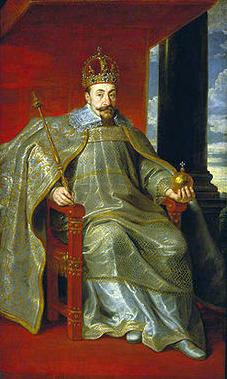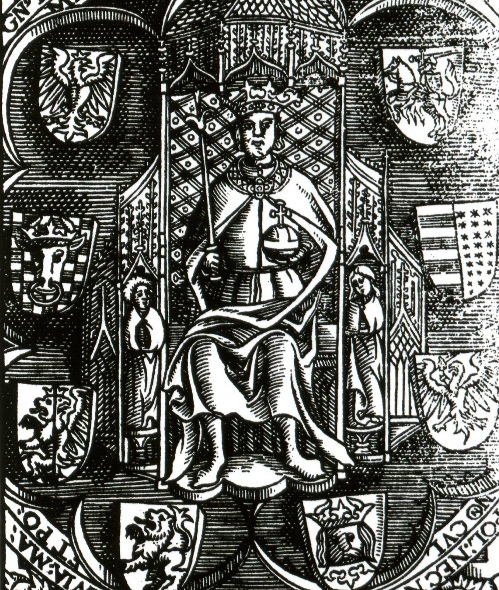|
Bischofsburg
Biskupiec (, ) is a town in northern Poland, in Warmia, in the Warmian-Masurian Voivodeship. It is located in Olsztyn County and, as of December 2021, it has a population of 10,496. The countryside surrounding Biskupiec is a popular tourist destination, part of the Masurian Lake District. History The town's name derived from the Prince-Bishops of Warmia, who had a castle built in the southeastern outskirts of their realm on the ''Dymer'' creek in the late 14th century. The fortress was first mentioned in a 1389 deed, the settlement that had developed nearby received town privileges according to Kulm law by Bishop Henry III Sorbom in 1395. The town sided with the Prussian Confederation, at the request of which King Casimir IV Jagiellon signed the act of incorporation of the region to Poland in 1454. The town and castle were devastated during the subsequent Thirteen Years' War (1454–66), and with Warmia passed to the Kingdom of Poland according to the Second Peace of ... [...More Info...] [...Related Items...] OR: [Wikipedia] [Google] [Baidu] |
List Of Sovereign States
The following is a list providing an overview of sovereign states around the world with information on their status and recognition of their sovereignty. The 205 listed states can be divided into three categories based on membership within the United Nations System: 193 member states of the United Nations, UN member states, two United Nations General Assembly observers#Current non-member observers, UN General Assembly non-member observer states, and ten other states. The ''sovereignty dispute'' column indicates states having undisputed sovereignty (188 states, of which there are 187 UN member states and one UN General Assembly non-member observer state), states having disputed sovereignty (15 states, of which there are six UN member states, one UN General Assembly non-member observer state, and eight de facto states), and states having a political status of the Cook Islands and Niue, special political status (two states, both in associated state, free association with New ... [...More Info...] [...Related Items...] OR: [Wikipedia] [Google] [Baidu] |
First Partition Of Poland
The First Partition of Poland took place in 1772 as the first of three partitions that eventually ended the existence of the Polish–Lithuanian Commonwealth by 1795. The growth of power in the Russian Empire threatened the Kingdom of Prussia and the Habsburg monarchy and was the primary motive behind the First Partition. Frederick the Great, King in Prussia, engineered the partition to prevent Austria, which was envious of Russian successes against the Ottoman Empire, from going to war. Territories in Poland–Lithuania were divided by its more powerful neighbours (Austria, Russia and Prussia) to restore the regional balance of power in Central Europe among those three countries. With Poland unable to defend itself effectively and foreign troops already inside the country, the Polish Sejm ratified the partition in 1773 during the Partition Sejm, which was convened by the three powers. Background By the late 18th century, the Polish–Lithuanian Commonwealth had been redu ... [...More Info...] [...Related Items...] OR: [Wikipedia] [Google] [Baidu] |
Second Northern War
The second (symbol: s) is a unit of time derived from the division of the day first into 24 hours, then to 60 minutes, and finally to 60 seconds each (24 × 60 × 60 = 86400). The current and formal definition in the International System of Units (SI) is more precise: The second ..is defined by taking the fixed numerical value of the caesium frequency, Δ''ν''Cs, the unperturbed ground-state hyperfine transition frequency of the caesium 133 atom, to be when expressed in the unit Hz, which is equal to s−1. This current definition was adopted in 1967 when it became feasible to define the second based on fundamental properties of nature with caesium clocks. As the speed of Earth's rotation varies and is slowing ever so slightly, a leap second is added at irregular intervals to civil time to keep clocks in sync with Earth's rotation. The definition that is based on of a rotation of the earth is still used by the Universal Time 1 (UT1) system. Etymology "Minute ... [...More Info...] [...Related Items...] OR: [Wikipedia] [Google] [Baidu] |
Polish–Swedish War (1626–1629)
The Polish–Swedish War of 1626–1629 was the fourth stage (after Polish–Swedish War (1600–1611), 1600–1611, Polish–Swedish War (1617–1618), 1617–1618, and Polish–Swedish War (1621–1625), 1620–1625) in a series of conflicts between Swedish Empire, Sweden and Polish–Lithuanian Commonwealth, Poland fought in the 17th century. It began in 1626 and ended four years later with the Truce of Altmark and later at Stuhmsdorf with the Treaty of Stuhmsdorf. Despite the Commonwealth winning certain notable battles, the Swedes would end up victorious in the end. Course 1626 The first encounter of the war took place near Battle of Wallhof, Wallhof, Latvia, where a Swedish army of 4,900 men under Gustavus II Adolphus ambushed a Polish-Lithuanian force of 7,000 men under Jan Stanisław Sapieha. Polish-Lithuanian casualties amounted to between 1000 dead, wounded and 150 captured. The Lithuanian commander later suffered a nervous breakdown. In May 1626 King Gustavus Ado ... [...More Info...] [...Related Items...] OR: [Wikipedia] [Google] [Baidu] |
Second Peace Of Thorn (1466)
The Peace of Thorn or Toruń of 1466, also known as the Second Peace of Thorn or Toruń (; ), was a peace treaty signed in the Hanseatic city of Thorn (Toruń) on 19 October 1466 between the Polish king Casimir IV Jagiellon and the Teutonic Knights, which ended the Thirteen Years' War, the longest of the Polish–Teutonic Wars. The treaty was signed in the Artus Court, and afterward a mass was held in the Gothic Franciscan Church of the Assumption of the Blessed Virgin Mary to celebrate the peace treaty. Background The treaty concluded the Thirteen Years' War which had begun in February 1454 with the revolt of the Prussian Confederation, led by the cities of Danzig (Gdańsk), Elbing (Elbląg), Kulm (Chełmno) and Toruń, and the Prussian gentry against the rule of the Teutonic Knights in the Monastic State, in order to join the Kingdom of Poland. Both sides agreed to seek confirmation from Pope Paul II and Holy Roman Emperor Frederick III, but the Polish side stre ... [...More Info...] [...Related Items...] OR: [Wikipedia] [Google] [Baidu] |
Crown Of The Kingdom Of Poland
The Crown of the Kingdom of Poland (; ) was a political and legal concept formed in the 14th century in the Kingdom of Poland, assuming unity, indivisibility and continuity of the state. Under this idea, the state was no longer seen as the Patrimonialism, patrimonial property of the monarch or dynasty, but became a common good of the political community of the kingdom. This notion allowed the state to maintain stability even during periods of interregnum and paved the way for a unique political system in Poland, characterized by a noble-based parliament and the Free election (Poland), free election of the monarch. Additionally, the concept of the Crown extended beyond existing borders, asserting that previously lost territories still rightfully belonged to it. The term ''Crown of the Kingdom of Poland'' also referred to all the lands under the rule of the Polish king. This meaning became especially significant after the Union of Lublin, union with the Grand Duchy of Lithuania, w ... [...More Info...] [...Related Items...] OR: [Wikipedia] [Google] [Baidu] |
Thirteen Years' War (1454–66)
Thirteen Years' War may refer to: *the Thirteen Years' War (1454–1466) between the Prussian Confederation and Poland versus the Teutonic Order state *the Long Turkish War (1593–1606) between the Habsburg Monarchy and the Ottoman Empire *the Russo-Polish War (1654–1667) Armed conflicts between Poland (including the Polish–Lithuanian Commonwealth and the Crown of the Kingdom of Poland) and Russia (including the Soviet Union, the Russian Empire, the Tsardom of Russia and the Principality of Moscow) include: : : ... between Russia, the Cossacks and the Polish–Lithuanian Commonwealth See also * Fifteen Years War (other) {{dab ... [...More Info...] [...Related Items...] OR: [Wikipedia] [Google] [Baidu] |
Casimir IV Jagiellon
Casimir IV (Casimir Andrew Jagiellon; ; Lithuanian: ; 30 November 1427 – 7 June 1492) was Grand Duke of Lithuania from 1440 and King of Poland from 1447 until his death in 1492. He was one of the most active Polish-Lithuanian rulers; under him, Poland defeated the Teutonic Knights in the Thirteen Years' War and recovered Pomerania. The Jagiellonian dynasty became one of the leading royal houses in Europe. The great triumph of his reign was bringing Prussia under Polish rule. The rule of Casimir corresponded to the age of "new monarchies" in western Europe. By the 15th century, Poland had narrowed the distance separating it from Western Europe and became a significant power in international relations. The demand for raw materials and semi-finished goods stimulated trade, producing a positive balance, and contributed to the growth of crafts and mining in the entire country. He was a recipient of the English Order of the Garter (KG), the highest order of chivalry and the most ... [...More Info...] [...Related Items...] OR: [Wikipedia] [Google] [Baidu] |
Prussian Confederation
The Prussian Confederation (, ) was an organization formed on 21 February 1440 at Marienwerder (present-day Kwidzyn) by a group of 53 nobles and clergy and 19 cities in Prussia, to oppose the arbitrariness of the Teutonic Knights. It was based on an earlier similar organization, the Lizard Union established in 1397 by the nobles of Chełmno Land. In 1454, the leader of the Confederation, Johannes von Baysen (Jan Bażyński), formally asked King Casimir IV Jagiellon, to incorporate Prussia into the Kingdom of Poland. This marked the beginning of the Thirteen Years' War between the Order's State and Poland, with the cities co-financing the military costs of the latter. Background According to the 1411 First Peace of Thorn which followed the Teutonic Knights' defeat in the Battle of Grunwald, the Teutonic Order had to pay high reparations to the Kingdom of Poland. The monastic state imposed high taxes on the cities to raise the funds as well as to re-arm for another war again ... [...More Info...] [...Related Items...] OR: [Wikipedia] [Google] [Baidu] |


